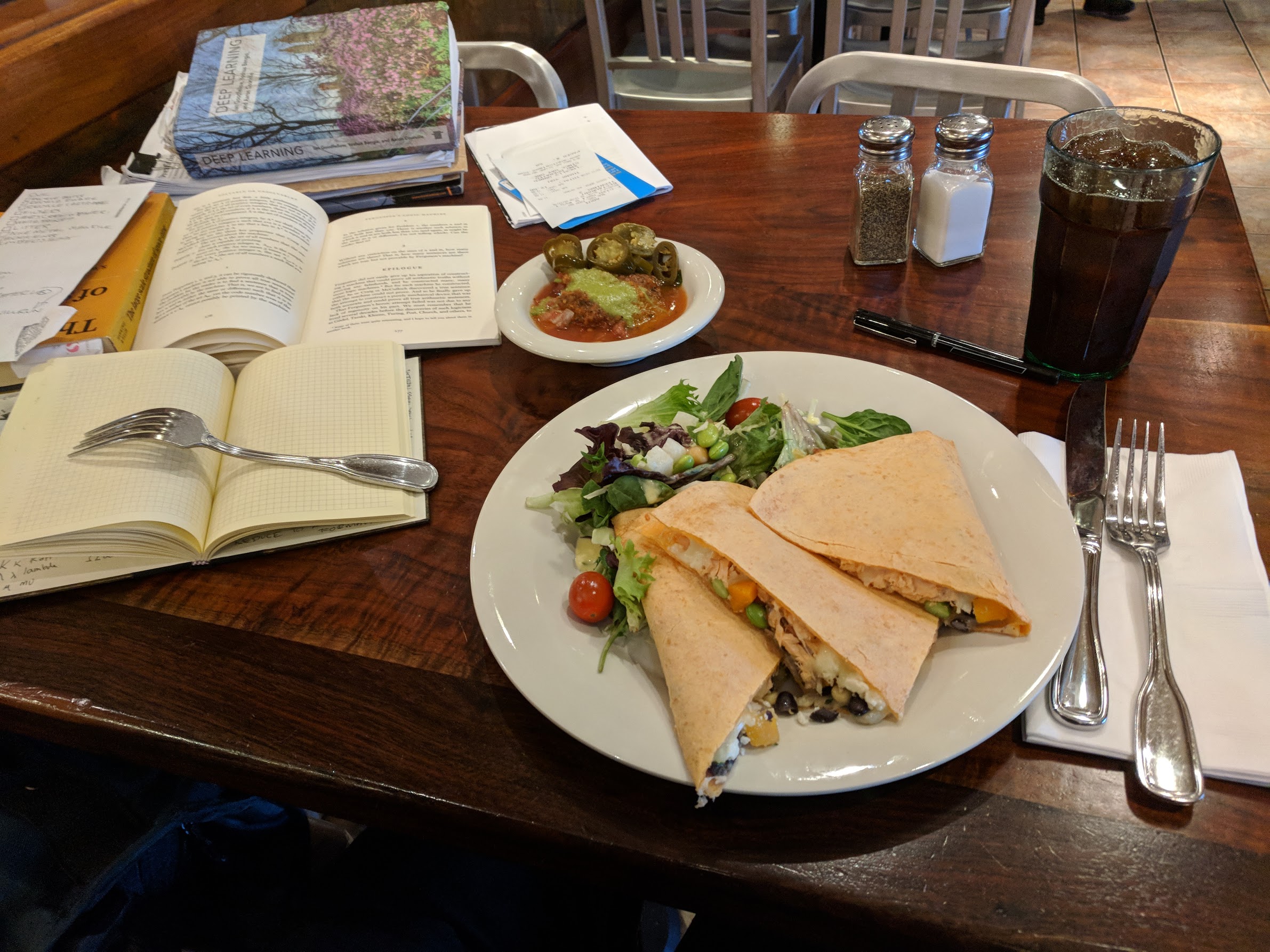
When I was a kid (well, a teenager) I’d read puzzle books for pure enjoyment. I’d gotten started with Martin Gardner’s mathematical recreation books, but the ones I really liked were Raymond Smullyan’s books of logic puzzles. I’d go to Wendy’s on my lunch break at Francis Produce, with a little notepad and a book, and chew my way through a few puzzles. I’ll admit I often skipped ahead if they got too hard, but I did my best most of the time.
I read more of these as an adult, moving back to the Martin Gardner books. But sometime, about twenty-five years ago (when I was in the thick of grad school) my reading needs completely overwhelmed my reading ability. I’d always carried huge stacks of books home from the library, never finishing all of them, frequently paying late fees, but there was one book in particular – The Emotions by Nico Frijda – which I finished but never followed up on.
Over the intervening years, I did finish books, but read most of them scattershot, picking up what I needed for my creative writing or scientific research. Eventually I started using the tiny little notetabs you see in some books to mark the stuff that I’d written, a “levels of processing” trick to ensure that I was mindfully reading what I wrote.
A few years ago, I admitted that wasn’t enough, and consciously began trying to read ahead of what I needed to for work. I chewed through C++ manuals and planning books and was always rewarded a few months later when I’d already read what I needed to to solve my problems. I began focusing on fewer books in depth, finishing more books than I had in years.
Even that wasn’t enough, and I began – at last – the re-reading project I’d hoped to do with The Emotions. Recently I did that with Dedekind’s Essays on the Theory of Numbers, but now I’m doing it with the Deep Learning. But some of that math is frickin’ beyond where I am now, man. Maybe one day I’ll get it, but sometimes I’ve spent weeks tackling a problem I just couldn’t get.
Enter puzzles. As it turns out, it’s really useful for a scientist to also be a science fiction writer who writes stories about a teenaged mathematical genius! I’ve had to simulate Cinnamon Frost’s staggering intellect for the purpose of writing the Dakota Frost stories, but the further I go, the more I want her to be doing real math. How did I get into math? Puzzles!
So I gave her puzzles. And I decided to return to my old puzzle books, some of the ones I got later but never fully finished, and to give them the deep reading treatment. It’s going much slower than I like – I find myself falling victim to the “rule of threes” (you can do a third of what you want to do, often in three times as much time as you expect) – but then I noticed something interesting.
Some of Smullyan’s books in particular are thinly disguised math books. In some parts, they’re even the same math I have to tackle in my own work. But unlike the other books, these problems are designed to be solved, rather than a reflection of some chunk of reality which may be stubborn; and unlike the other books, these have solutions along with each problem.
So, I’ve been solving puzzles … with careful note of how I have been failing to solve puzzles. I’ve hinted at this before, but understanding how you, personally, usually fail is a powerful technique for debugging your own stuck points. I get sloppy, I drop terms from equations, I misunderstand conditions, I overcomplicate solutions, I grind against problems where I should ask for help, I rabbithole on analytical exploration, and I always underestimate the time it will take for me to make the most basic progress.
Know your weaknesses. Then you can work those weak mental muscles, or work around them to build complementary strengths – the way Richard Feynman would always check over an equation when he was done, looking for those places where he had flipped a sign.
Back to work!
-the Centaur
Pictured: my “stack” at a typical lunch. I’ll usually get to one out of three of the things I bring for myself to do. Never can predict which one though.